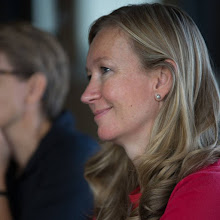Feminist Myths and Michelle Obama
More than 10 years ago, Bing and Bergvall posed the following challenge: ‘Why are questions that strengthen the female-male dichotomy so frequently asked, while those that explore other types of variation evoke much less interest?’ (1996:3). While assumptions of binary difference between all men and all women is clearly untenable, a ‘Myth of Mars and Venus’ as Deborah Cameron (2007) puts it, two articles in a British weekend newspaper reminded me that question of inequality between women and men continues to resurface in various guises.
The Daily Mail quoted Dr Catherine Hakim, running a short piece headed ‘Feminist myths “are making equality laws unfair to men”’. Quite rightly, Hakim’s work has drawn attention to intra-category variation: that ‘women’ are not all the same, and certainly not all women who choose to work are the same: ‘The most misleading feminist myth is that women are united in their goals and priorities’. The Mail article concludes by summarising her latest findings that ‘while women could choose between work and family, men had fewer choices’. Representing this apparente difference in this way is not the whole story though. Wider range of choice doesn’t necessarily equate to better or more equal choices, nor does it interrogate the reasons for or consequences of work-life choices for groups of women and mean. ‘Feminist myths’ are presented as the problem – not the real life inequalities experienced by real people in real contexts. Is recognising this the same as getting my nail file out as Gerald Warner puts it?
Flick on a few pages in the Daily Mail and the outcome of the American election features in several articles. Michelle Obama is not without mention. Never mind the momentous implications of Barack Obama’s success, the British press is all too ready to focus its critique on Michelle Obama’s wardrobe. I’m not going to repeat the exact quotations here (in my opinion, they are irritating banal). Nonetheless, perhaps this persistent and stereotypical representation of a newsworthy female figure reminds us why questions about ‘myths of difference’ continue to evoke interest.
The Daily Mail quoted Dr Catherine Hakim, running a short piece headed ‘Feminist myths “are making equality laws unfair to men”’. Quite rightly, Hakim’s work has drawn attention to intra-category variation: that ‘women’ are not all the same, and certainly not all women who choose to work are the same: ‘The most misleading feminist myth is that women are united in their goals and priorities’. The Mail article concludes by summarising her latest findings that ‘while women could choose between work and family, men had fewer choices’. Representing this apparente difference in this way is not the whole story though. Wider range of choice doesn’t necessarily equate to better or more equal choices, nor does it interrogate the reasons for or consequences of work-life choices for groups of women and mean. ‘Feminist myths’ are presented as the problem – not the real life inequalities experienced by real people in real contexts. Is recognising this the same as getting my nail file out as Gerald Warner puts it?
Flick on a few pages in the Daily Mail and the outcome of the American election features in several articles. Michelle Obama is not without mention. Never mind the momentous implications of Barack Obama’s success, the British press is all too ready to focus its critique on Michelle Obama’s wardrobe. I’m not going to repeat the exact quotations here (in my opinion, they are irritating banal). Nonetheless, perhaps this persistent and stereotypical representation of a newsworthy female figure reminds us why questions about ‘myths of difference’ continue to evoke interest.


1 Comments:
Hi Ruth, I've been following your blog for a while, very interesting. Thanks for a good read.
With regards to gender and language, here's a tool I thought might interest you http://genderanalyzer.com which analyses blogs and tries to predict which gender is the person writing. It's not completely accurate, however, as your blog is 72% likely to be written by a man!
Post a Comment
<< Home